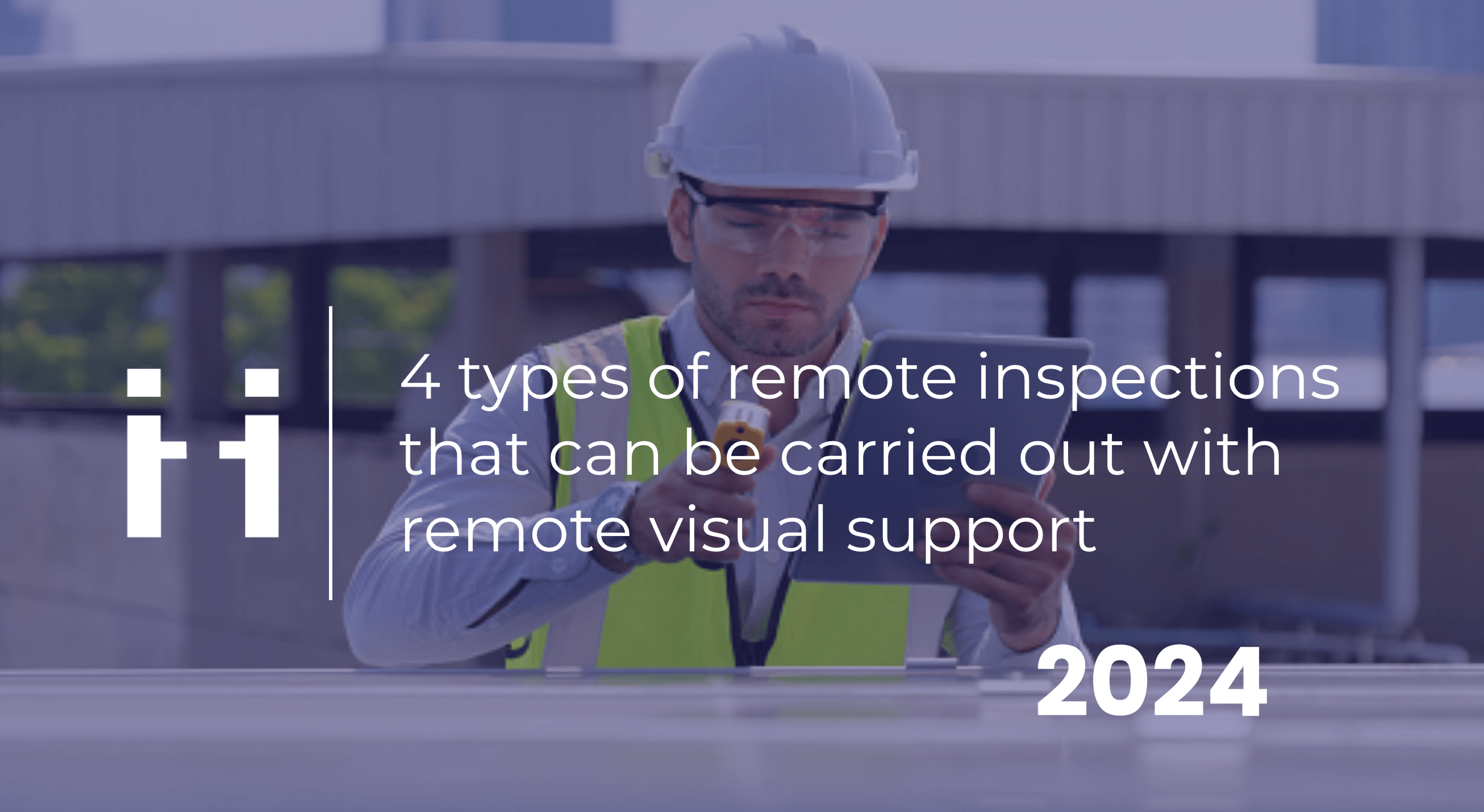
Share this article
Share this article
Remote inspections have revolutionized various industries, allowing for assessments and evaluations without physical presence. They have become an indispensable tool, especially after the COVID pandemic when physical presence on-site was not possible. Not only do they save time and resources but also ensure operational continuity.
However, conducting effective remote inspections comes with its own set of challenges, often hindered by limited visual access and the inability to closely examine on-site elements. This is where remote visual support tools play a pivotal role. These tools enable seamless communication and visual aid, facilitating different types of remote inspections, including visual, equipment, infrastructure, and safety assessments.
Understanding these inspection types, the challenges they pose, and the application of remote visual support tools is crucial in harnessing the full potential of remote inspections while ensuring accuracy, efficiency, and cost-effectiveness.
The beauty of remote inspection is that it can be applied to any industry and business needs. In these articles, we will take a heightened view and discuss four big types of remote inspections where remote visual support can provide the most benefits: equipment inspection, infrastructure assessment, quality control checks, and inspections in hazardous environments.
The evaluation of machinery, tools, or technical assets remotely falls under equipment inspections.
Technicians encountering complex issues often struggle to accurately diagnose problems or conduct repairs without expert guidance. Traditional troubleshooting methods sometimes result in prolonged equipment downtime and increased operational costs.
Remote visual support solutions give the ability to conduct real-time video calls powered by collaborative tools. They help remorse professionals visually assess equipment issues and guide on-site personnel through troubleshooting procedures. The use of annotations, visual aids, and live demonstrations during these calls significantly enhances the accuracy and efficiency of problem resolution.
As a result, timely assistance saves the assets from breakdown and prolongs their lifetime helping the companies minimize maintenance costs.
Video recordings of the conducted inspections serve as documented proof of compliance with industry standards and contractual requirements. In case of a dispute, they can be consulted to restore the sequence of the events.
Eventually, these recordings constitute a repository of data giving the company a 360° visibility of the assets and their conditions. Documented maintenance processes can serve as a valuable source of practical information for step-by-step guides created for the company’s technicians to boost their autonomy.
Some installation works require a prior assessment of a location. For example, this is the case for the installation of electric vehicle charging stations. The company needs to assess the conditions of the customer’s garage or the facilities of the public parking lot, including inspecting the electric meter and electric grids.
With the advent of remote visual support, these assessments can now be executed seamlessly without the need for physical presence. Through live video calls and collaborative tools, experts can guide customers to showcase specific elements, allowing them to remotely verify location suitability, capture necessary images, and evaluate pertinent details. This method not only expedites the verification process but also eliminates the need for extensive travel, reducing time constraints and associated costs.
Furthermore, it ensures a thorough assessment while enabling efficient decision-making regarding installation feasibility, thereby streamlining the overall process and enhancing customer satisfaction through prompt and accurate assessments.
Quality control inspections conducted with remote visual support signify a significant advancement in ensuring product integrity and compliance without the constraints of physical presence.
Utilizing remote visual support tools, quality control inspections encompass a streamlined process of evaluating product quality, adherence to standards, and identifying defects or discrepancies in manufactured goods.
Through live video feeds, high-resolution imagery, and collaborative platforms, inspectors can remotely assess product specifications, verify manufacturing processes, and detect potential flaws or irregularities in real-time. This method enables swift decision-making, as experts can guide and collaborate with on-site personnel, addressing issues promptly to uphold quality standards.
By leveraging remote visual support, companies can ensure compliance, minimize errors, and maintain customer satisfaction by delivering products of superior quality.
Safety checks conducted through remote visual support play a pivotal role in addressing hazardous working conditions, especially in environments that pose inherent risks or are challenging to access.
For instance, in industries such as oil and gas, where offshore rigs or remote drilling sites present hazardous conditions, remote visual support enables real-time monitoring of operations and equipment without the need for constant on-site presence.
Similarly, in construction settings, where working at heights or within confined spaces poses risks, remote visual support empowers safety personnel to remotely guide workers on proper safety protocols and equipment usage.
This approach not only ensures the safety of workers in challenging or hazardous environments but also exemplifies the versatility and effectiveness of remote visual support in mitigating risks and fostering a culture of safety across diverse work settings.
In conclusion, the integration of remote visual assistance has transformed the landscape of inspections across various industries. From visual assessments to equipment inspections, infrastructure verifications, quality control checks, and ensuring safe working conditions, remote visual support tools have revolutionized how professionals conduct remote inspections.
As technology continues to evolve, the potential for remote visual assistance in inspections is boundless, promising further advancements in operational excellence, knowledge retention, and the delivery of high-quality services.